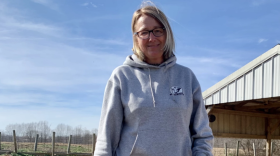This summer’s drought caused a significant decrease in grass hay production, which many cattle farmers rely on for feed.
The dry weather cut hay production by two-thirds, raising prices $15 to $20 per ton, says Caldwell County Extension Agent Shane Bogle. “Normally, farmers will start feeding hay around this area in probably Novemberish, October, mid-October to November. This year they were feeding hay in July. So most of the stored hays that they would have relied on for the early part of the winter season or late fall was already gone before we even got to fall," he said.
Some farmers have culled their animals so they have fewer mouths to feed. That's especially true for those who do not grow hay themselves. Marshall County Extension Agent Lincoln Martin says since most of the beef operations in his county are small they sell their calves first to cut back on feed costs.
But he says most of the farmers who do grow hay have a positive outlook and are already preparing for next year’s crop.
“Eternally optimistic is kind of their mindset. They’re taking the steps now to ensure that they’ll be in a better position to start again next year," said Martin.
Farmers are preparing their pastures by reseeding and fertilizing in hopes of an increased crop next spring. But pastures are already recovering because of last month’s rain, and a fall cutting slightly better than usual is expected, says Bogle.
He says he has not heard of anyone completely running out of hay and adds that the crop’s fall harvest should sustain most farmers throughout the winter.



